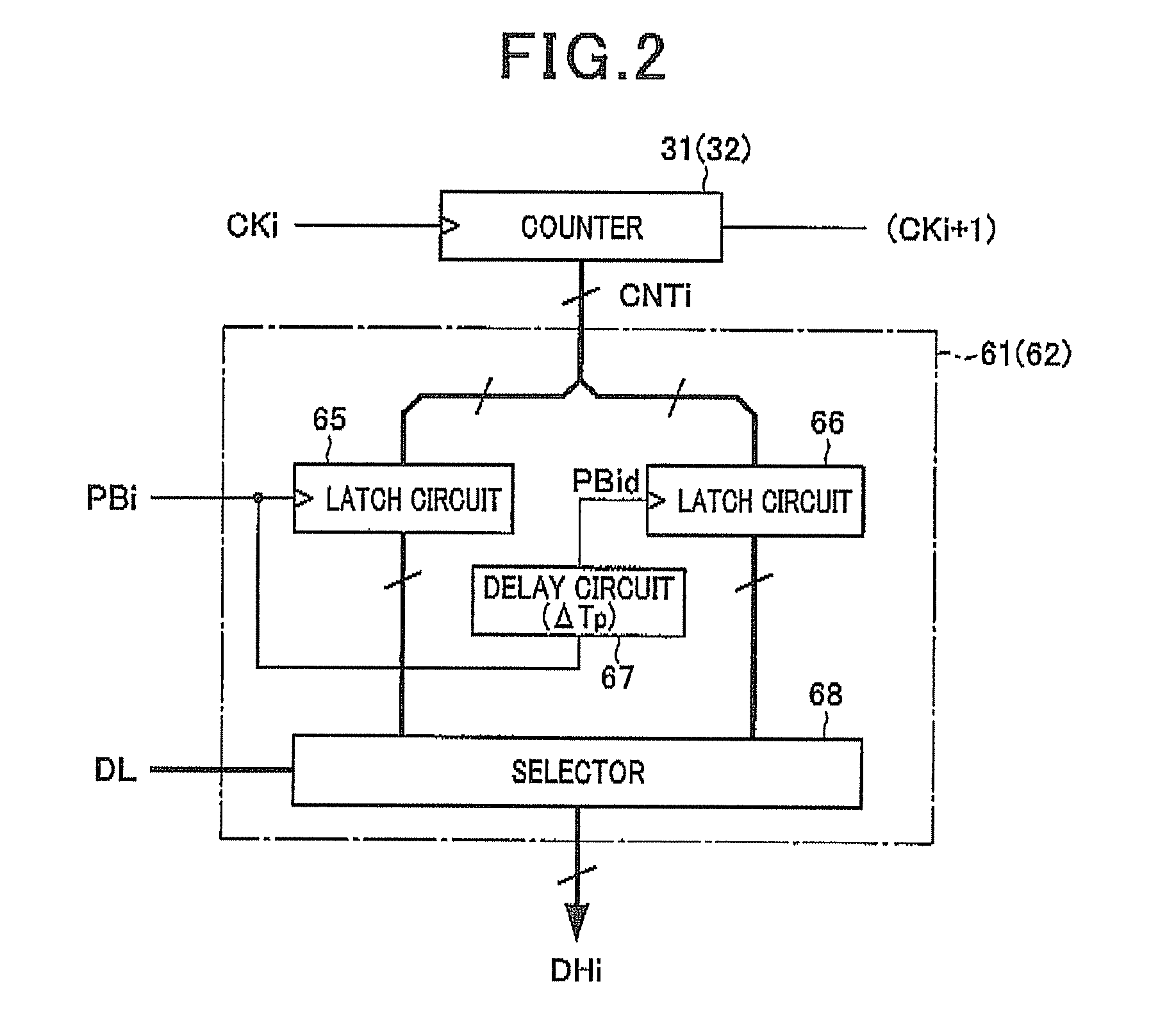Pulse phase difference coding circuit
a coding circuit and phase difference technology, applied in the field of pulse phase difference coding circuits, can solve the problems of increasing the size power consumption, non-uniform delays in individual delay elements, and so as to reduce the performance of the pulse phase difference coding circuit. the effect of reducing the number of delay elements
- Summary
- Abstract
- Description
- Claims
- Application Information
AI Technical Summary
Benefits of technology
Problems solved by technology
Method used
Image
Examples
Embodiment Construction
[0022]With reference to the accompanying drawings, hereinafter are described embodiments. Throughout the drawings, components identical with or similar to each other are given the same numerals for the sake of omitting unnecessary explanation.
[0023](Entire Configuration)
[0024]FIG. 1 is a block diagram showing an entire configuration of a pulse phase difference coding circuit 1 which codes a phase difference between a pulse for activation PA (activation pulse PA) and a pulse for measurement PB (measurement pulse PB) into numeric data.
[0025]As shown in FIG. 1, the pulse phase difference coding circuit 1 is configured with a ring delay line (RDL) formed by connecting a plurality of delay elements 2a in a ring shape. The pulse phase difference coding circuit 1 includes a pulse delay circuit 2 and a count part 3. When the pulse for activation PA is inputted into the pulse delay circuit 2 from an external unit, the pulse delay circuit 2 transmits pulse signals in sequence with delay. The ...
PUM
 Login to View More
Login to View More Abstract
Description
Claims
Application Information
 Login to View More
Login to View More - R&D
- Intellectual Property
- Life Sciences
- Materials
- Tech Scout
- Unparalleled Data Quality
- Higher Quality Content
- 60% Fewer Hallucinations
Browse by: Latest US Patents, China's latest patents, Technical Efficacy Thesaurus, Application Domain, Technology Topic, Popular Technical Reports.
© 2025 PatSnap. All rights reserved.Legal|Privacy policy|Modern Slavery Act Transparency Statement|Sitemap|About US| Contact US: help@patsnap.com



